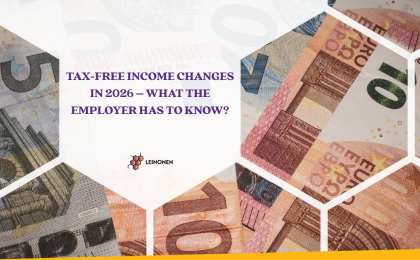In simpler terms, this means that the VAT burden must rest on the end consumer. The right to deduct input VAT must be guaranteed for entrepreneurs and persons who have not registered themselves as entrepreneurs, but who operate as entrepreneurs and the output of whose operations is an activity subject to VAT, despite the fact that they have not registered as VAT payers as required.
The European Court of Justice finds that the general principle of VAT neutrality demands that the right to deduct input VAT be given in situations where substantive requirements for deduction have been met. This also applies in situations where the taxable person has failed to meet certain formal requirements. Consequently, if the tax authority has the data required to ascertain that the substantive requirements for deduction have been met, it cannot establish any restrictions on the VAT payer’s right to deduct input VAT. It would be interesting to test this position of the European Court of Justice in a situation where one of the sellers (who is an Estonian taxable person) has forgotten, either due to negligence or lack of awareness, to inform the tax authority that it voluntarily adds VAT to a transaction for selling immovable property. The firm position in current administrative and judicial practice in Estonia is that the buyer does not have the right to deduct input VAT in such situations. The buyer is punished for the seller’s failure to meet a formal requirement. It would be interesting to analyse this situation and, if necessary, request a preliminary ruling from the European Court of Justice.
The current practice of the European Court of Justice is predominantly based on cases where the buyer is the one that has failed to comply with certain formal requirements, but they still retain the right to deduct input VAT. The opposite situation – where the seller is the one who has left something undone – is considerably more common, at least in Estonia.




